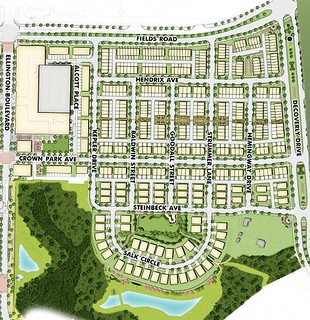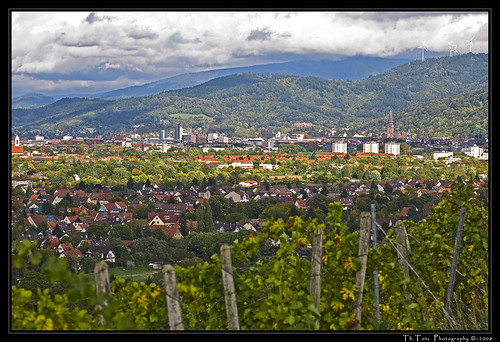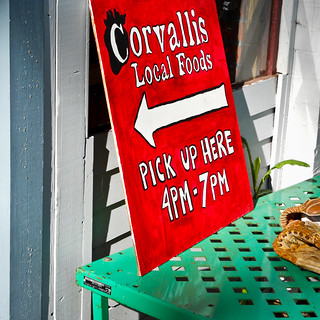(Still) Searching for the sustainable city formula

Posted August 14, 2013 at 1:29PM
I’m obsessed with trying to find just the right set of goals to define urban sustainability. Professionally, the world of smart growth has been my home base for two decades – since before we even called it smart growth – and, for a long time, the classic “ten principles” of smart growth framed by an EPA-led consortium seemed a great answer. But that list, which stressed many important values such as walkability, housing opportunities, mixed uses, preserved natural areas, and transportation choices, grew stale in its implementation.
In particular, smart growth advocates soon coalesced around the development and transportation side of the agenda, failing to place due emphasis on coequal values contained in the original list such as conservation and equity. Meanwhile, as I last wrote earlier this year, the “ten principles” agenda fails altogether to account for lessons learned in the last two decades about newly emerged topics such as green infrastructure, food, health, green buildings, the merits of moderate density, revitalization and gentrification, and more.
I made a run at creating an updated list of smart growth principles a couple of years ago, and for a short while there was a low buzz in the smart growth community about whether we should actually do such an updating. (My new list placed more emphasis on equity, healthy living, nature, and resource efficiency.) More recently, Bill Adams came up with his own list of new principles for “smarter smart growth.”  And preceding all these definitions and lists was the Charter of the New Urbanism, about as good and complete delineation of excellent urban design principles as you will ever find. (To the extent that I have occasional quarrels with new urbanist practitioners, it is when the Charter’s principles are violated in practice. It was, and is, a magnificent document.)
And preceding all these definitions and lists was the Charter of the New Urbanism, about as good and complete delineation of excellent urban design principles as you will ever find. (To the extent that I have occasional quarrels with new urbanist practitioners, it is when the Charter’s principles are violated in practice. It was, and is, a magnificent document.)
Are such definitions important? Well, yes, because we advocates are a self-referential sort, and we need to have a vision to advocate. When we do, we reinforce each other and become stronger and more effective. And principles articulate that vision.
But, ultimately, I think I have decided that no definition of smart growth or “urbanism” (or even “placemaking”) that focuses primarily on the built environment gets us close enough to sustainability to cheer about. Those things are essential, but not enough. We need a bigger toolbox and, to risk extending the metaphor, a more diverse set of carpenters to employ the tools.
What else belongs in the toolbox besides smart growth, urbanism, and placemaking? Well, I’m working on it, but I think one set of tools has something to do with stewardship of our natural and cultural environments. Without using the term, Lee Epstein did a terrific job of capturing stewardship in his nine "essential elements" of green cities in his post on Switchboard earlier this year:
- Committing to green;
- Building green;
- Buying green;
- Powering green;
- Conserving nearby (and creating internal) green landscapes;
- Protecting green: both water quality and water quantity;
- Locating green: creating a compact, walkable, interconnected, mixed-use community;
- Moving green: diversifying transportation and increasing accessibility; and
- (Not) wasting green: getting to zero on the production of waste.
I think that's a great list.
This leads me to yet another set of principles, this one originating from the UK and aiming for a more locally focused,"deep green" ethic containing not just suggestions for municipal undertakings but also for changes in individual responsibility and behavior. It is related to the concept of "one planet living," or the idea that, if all the world lived this way, the planet could be sustained. (Most Americans and other westerners are said to be currently engaged in multi-planet living, meaning that it would take resources equivalent to several earths to sustain our lifestyle if it were universal.)
The new concept is “conserver cities,” defined last week in a provocative article posted on the Sustainable Cities Collective as “efficiency replacing waste; renewability replacing resource squandering; living within biophysical limits replacing pollution; implementing socio-economic goals geared to wellbeing for all, not more and more money for a few and for a limited period; this generation and those to come, the world over, getting their dues; empowering local communities within urban areas; operating a cyclic economy.”
That’s a little broad but the author, Bristol-based Glenn Vowles, does have a somewhat more specific list:
Getting around
- The retention and improvement of locally available facilities, services, and jobs and the availability and use of local resources.
- Far better, cheaper, more extensive public transport; much better cycling and pedestrian provision.
Environmental quality and quantity
- Protecting, enhancing and if possible increasing open, green, natural spaces; biodiversity enhancing developments.
- Adopting and achieving high land, air, water and environmental quality standards.
Learning
- Education for sustainable living.
Waste and energy
- Innovative low carbon and low waste systems and designs; local energy saving and the micro-generation of energy.
- Waste avoidance, reuse and recycling.
- More local, ethical and organic food availability; more home and allotment grown food.
People and participation
- People taking personal responsibility to be more environmentally-friendly.
- Inclusive, informed, genuine public participation in community life.
Policies and performance
- Open, involving, accountable, ethical attitudes and policies.
- Broad-based measures of progress - social, economic and biophysical.
Vowles elaborates upon the list in his article. What’s completely missing, however, is anything having to do with the built environment. I do not believe one can have true urban sustainability without attention to walkable streets and densities, compact development footprints, a diversity of neighborhood housing choices and amenities, and so on - the elements of smart growth and urbanism that began this article. Is the omission due to the much lesser amount of sprawl to cure in Britain, or perhaps did Vowles make an assumption that the development pattern was a given and thus not his focus?
I don’t know, but aside from that omission I do think he is on to something, addressing many of the issues that smart growth and new (or old, for that matter) urbanism leave out. If one were to marry Vowles’s list with a tightly articulated built-environment document such as the Charter of the New Urbanism, that might be a powerful combination indeed.
Living up to the ideals is another matter, of course. We call them ideals for a reason. But it’s something to shoot for.
Related posts:
- Measuring life quality: the Boston Indicators Project (May 13, 2013)
- The essential elements of green cities (by Lee Epstein) (April 3, 2013)
- Measuring community sustainability: how do we know if we're on the right path? (June 21, 2012)
- Eight components of a "healing city" (January 12, 2012)
- Smart growth principles for the 21st century (December 13, 2010)
Move your cursor over the images for credit information.
Please also visit NRDC’s sustainable communities video channels.


